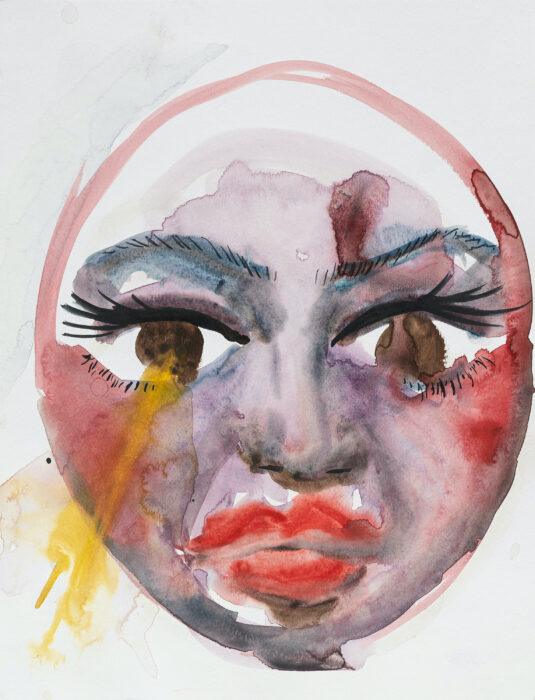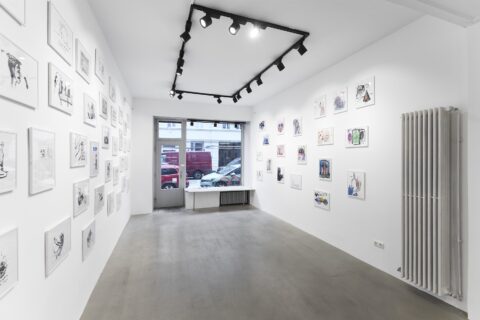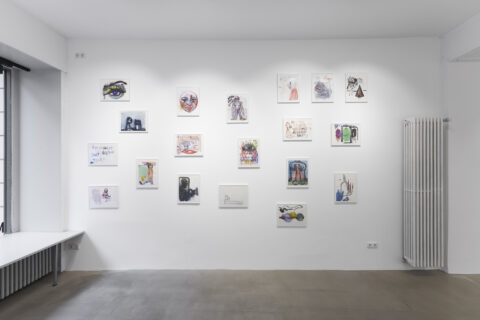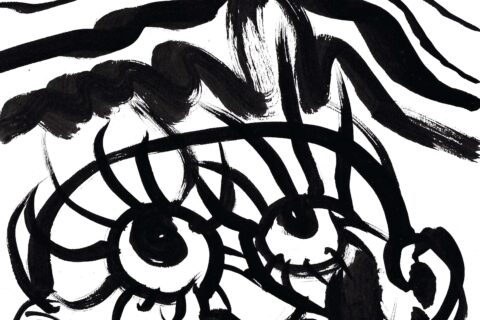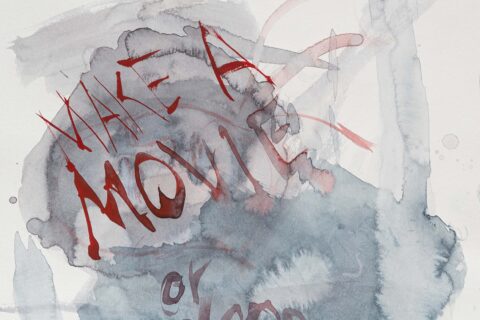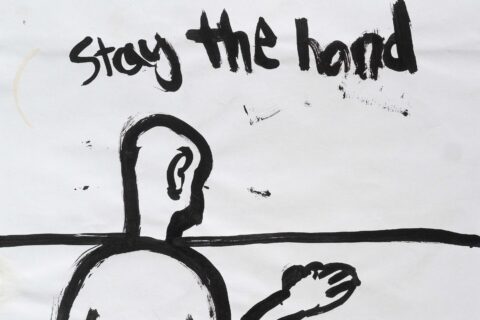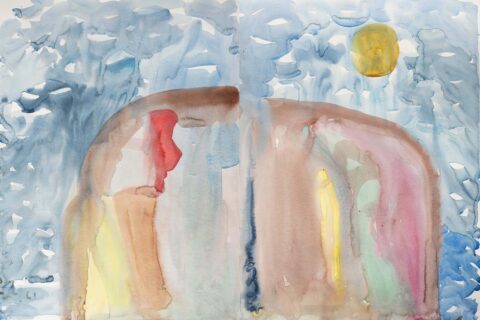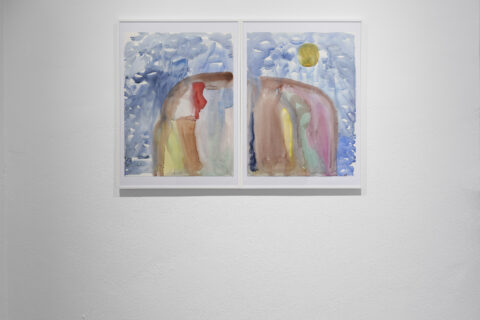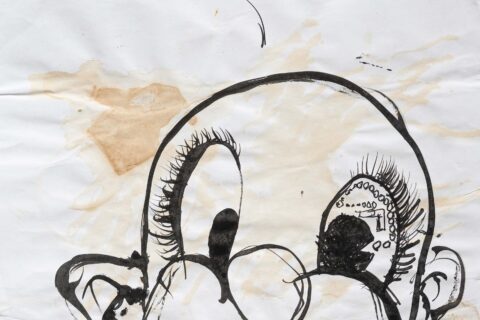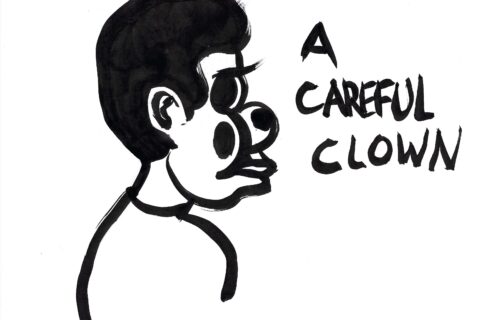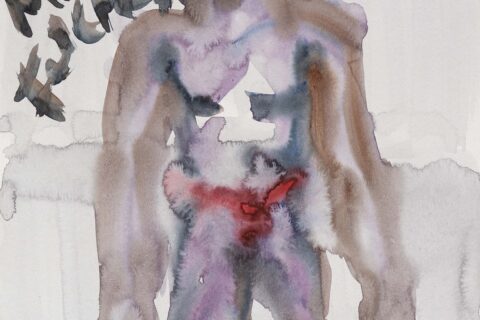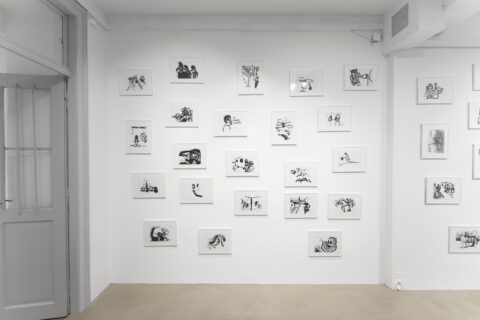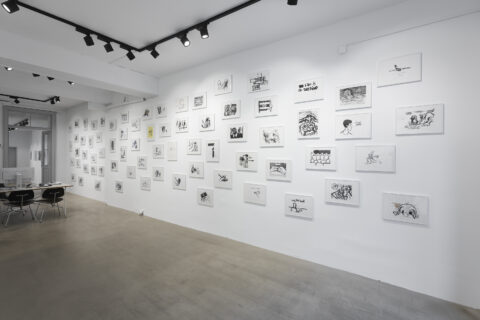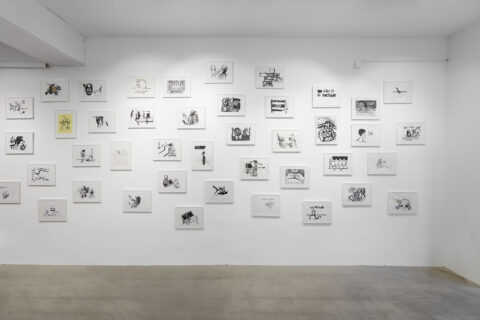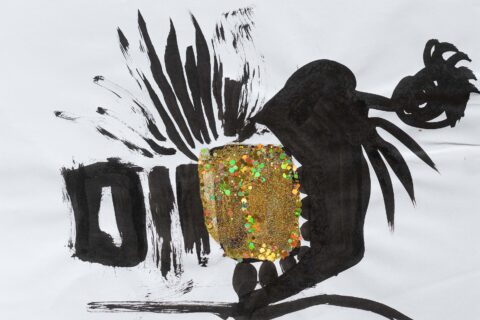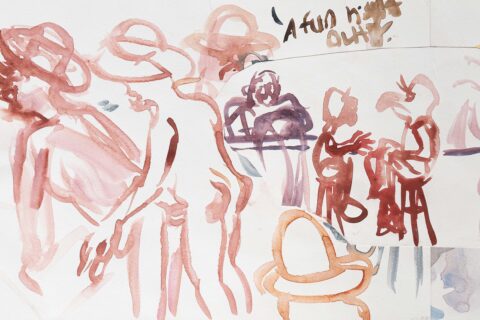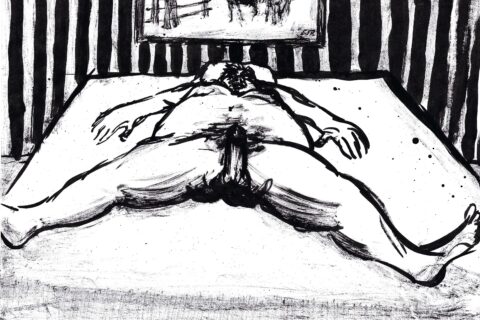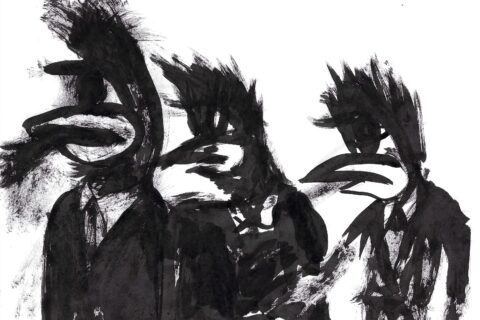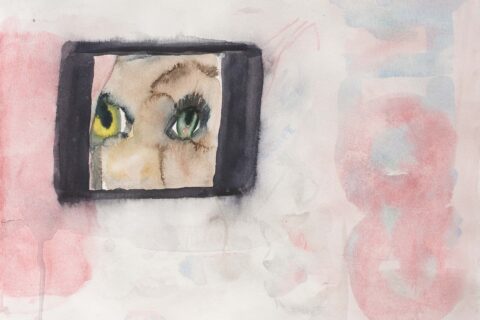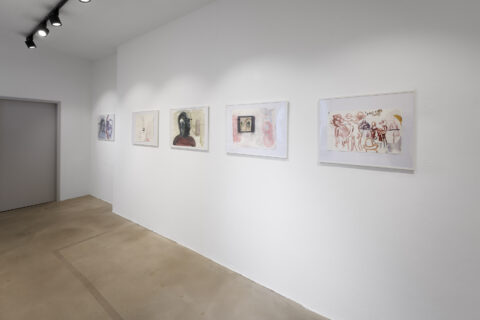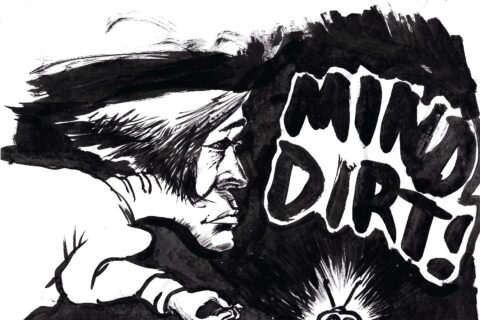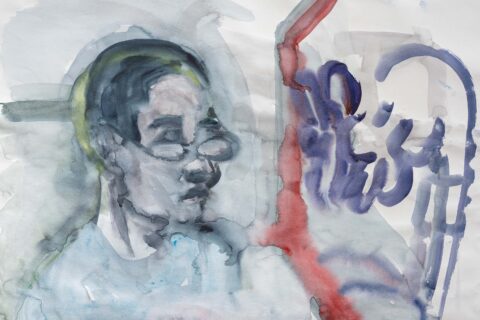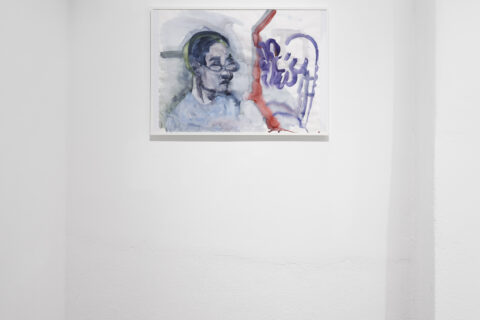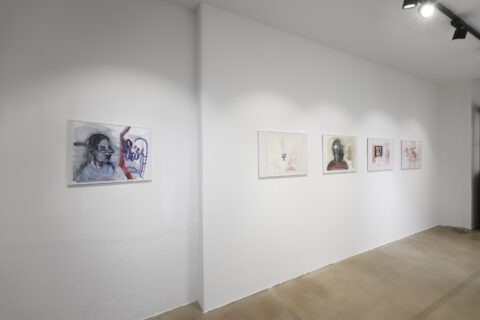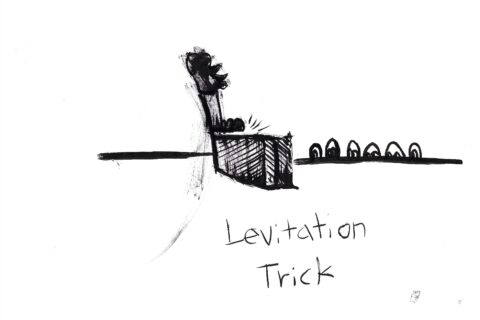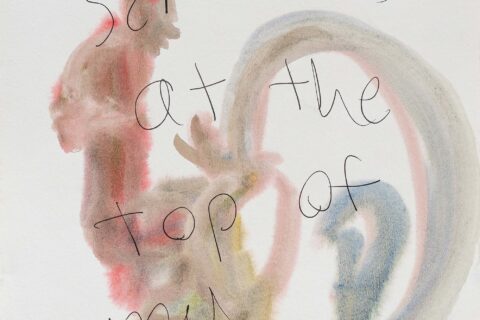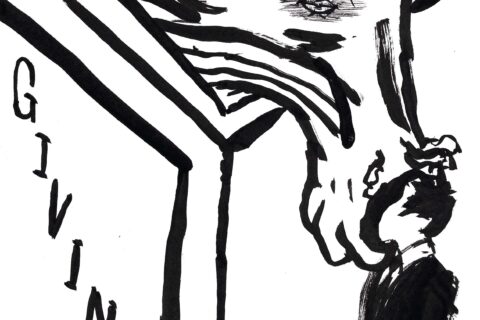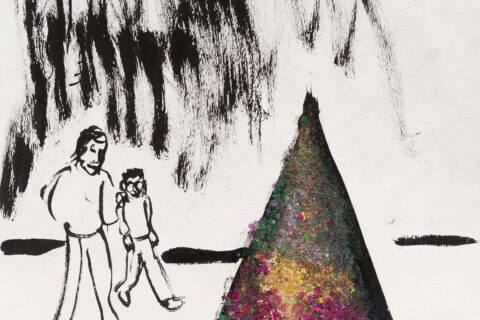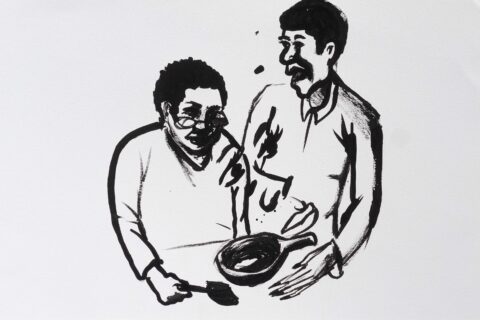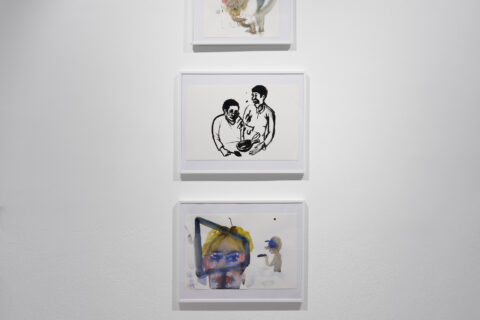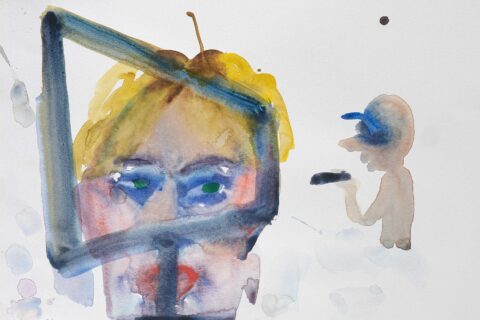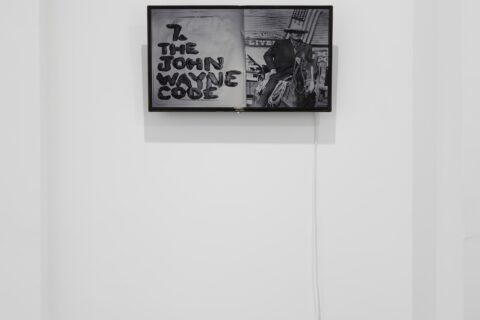Elliott Jamal Robbins The Affected Image
14/04/2023 – 27/08/2023
Galerie Nagel Draxler
Türkenstraße 43
80799 München
Eröffnung: Donnerstag, 13. April 2023, 18-21 Uhr
Opening: Thursday, April 13, 2023, 6-9 pm
Kontakt:
Peter Martin: +49 (0)172 8639 182
Press Release
We shall best understand the origin of the pleasure derived from humor if we consider the process which takes place in the mind of anyone listening to another man’s jest. -Sigmund Freud, “Humor” (1928)
The works in the exhibition “The Affected Image” are concerned with polarities, primarily looking/seeing, and being looked at. Various drawings relate to the daily practice of thinking on the page. The internal thought processes, and external engagement with the visual culture that surrounds Elliott Jamal Robbins are fodder for the interplay of pigment, brushes, and paper.
The cartoon is a ubiquitous artifact of western mass media culture. Invoking the word itself makes us aware of our specific social and chronological positionality, as it is often dually applied to small static drawings, or animated films. Depending on who we are, where we are, our education level, and certainly how old we are, the culture of images that surround us will inform how we imagine what a cartoon is. Cartoons in mass communication function as a kind of highly reflexive prism, both condensing an intense amount of information, and fractioning the picture world that we are already familiar with. Even the drawn image, an artist's style choices, and other genre norms of the cartoon format are a part of how it conditions how we will receive and understand the textual information of the picture. Text, as well, regularly disrupts the illustration, producing a fractured reading of the work. There is no other aesthetic format that communicates as much complexity with minimal material economy. The funny’s have a job to do. Communication is key, and broad communication is the ideal. They work with what we have already seen, our shared aesthetic experience of time, space, and life lived on Earth reduced to discreet little pictures, with maybe some writing as well.
Presented together, these drawings and paintings becomes a complex of montages; a disjointed narrative made up of appropriations, self-generated imagery, text, and the abstracted figure. It is a body of work and presentation that rejects linearity. Abstraction draws our attention away from the work. Divorced from didactic reasoning, we must consider how we make meaning out of the images. What are the norms of the cartoon format, and what becomes of the unmet expectations we recall from our encounter? What are the images conjured in our minds from our expectations? How does familiarity, and its subversion, reveal the extent of a far-reaching normativity that pervades our lives in unspoken ways. How does this affect us socially, even politically?
Robbins refers to a moving image work as 'affected moving-images,' which also presents a reappraisal of comic norms. The artist considers the medium of animation as a site for exploring various coalescing histories of craft, industrialization, labor (dually fetishized, and concealed), racial and gendered stereotypes, and the framing of history and folk traditions through mimesis. Abstractions of Bugs Bunny, or Daffy Duck, in another bout with Elmer Fudd. A black and queer body bumping up against white heteropatriarchy- as dually oppositional and pleasure seeking, drawn out to an extreme of hyper violent sexuality. This exchange is further accompanied/disrupted by a text from Robbins. It imbues their work with a complex sexual reality between bodies in the form of a subjective narrative. It is the same sexual and experiential complexities between seemingly disparate racial, social, and political bodies that have been, and remain, cut out of the canon of moving images. It is a film which ruptures the ambivalence of this relationship, which remains at the heart of American culture at large; abstracted into a rabbit and his white male hunter as comic foil. It lifts a veil of erotic suggestiveness and subtle racial signifyers lifted and brings into high opaque visibility explicit racism, sexualism, and erasure imbedded in the norm.
This subversion of a humor, which is itself a subversion of affect, brings into high focus the problems inherent in the screen. It first and most consistently has been used to promote militaristic empire, and to coalesce support for its endeavors, while erasing the real experiences and lives of those who have been considered outsiders/othered/non-white/non-able bodied/ women/etcetera. Thus, the works by Robbins in this show suss out a reappraisal of the forms from which we derive humor.
“The Affected Image” marks the second solo exhibition with Elliott Jamal Robbins at Nagel Draxler. Robbins, born 1988 in Oklahoma City, lives and works near Tulsa.
